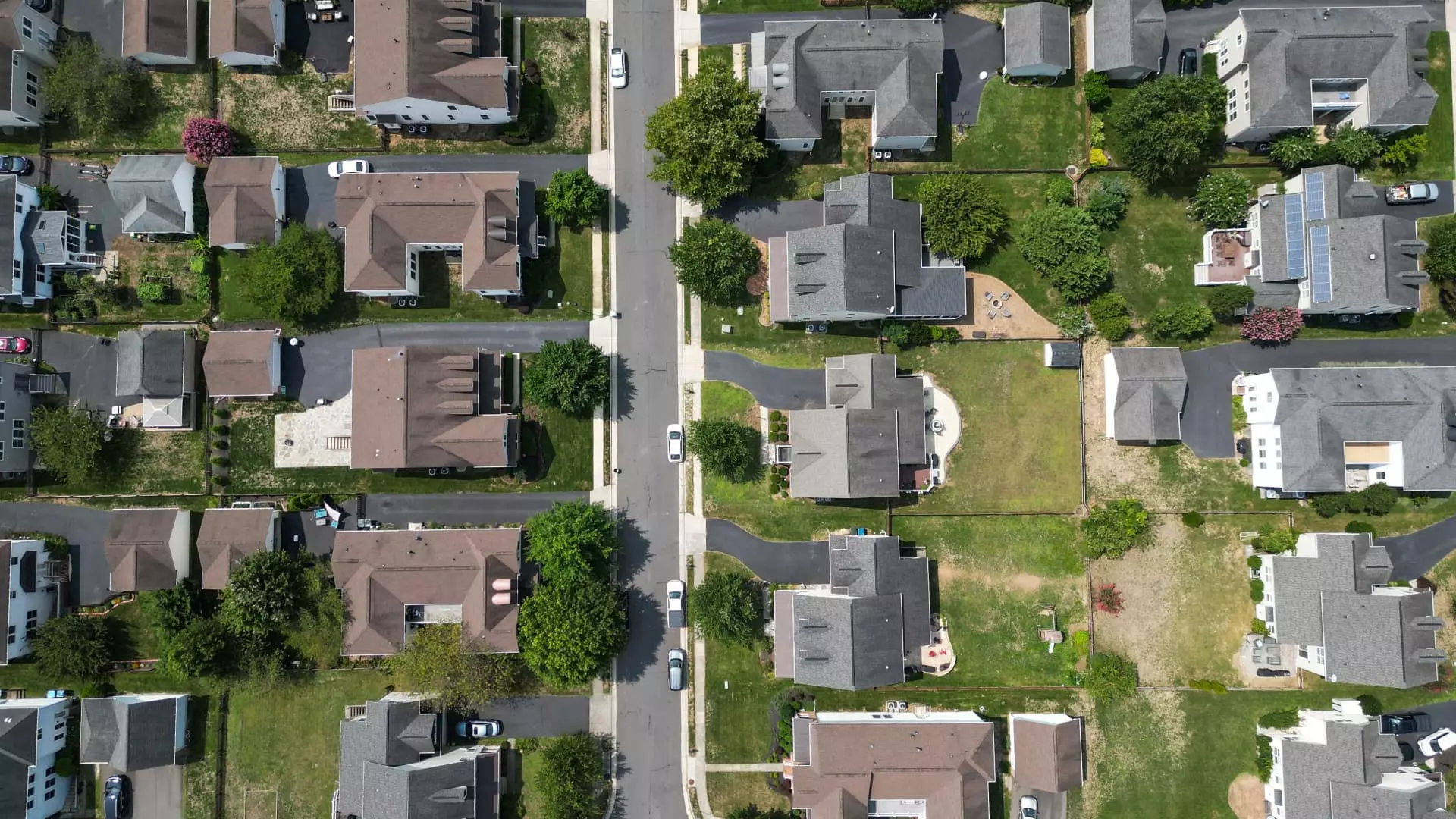In a surprising turn, mortgage rates have plummeted to their lowest levels since April, igniting a flurry of refinancing activity among current homeowners. This decline appears, on the surface, to be a boon for many Americans seeking to reduce their borrowing costs. The Mortgage Bankers Association reports a 7% weekly surge in refinance applications, over 40% higher than last year, suggesting some Americans are eager to capitalize on cheaper borrowing terms. However, beneath this promising headline, lies a complex web of economic implications that demand a more critical perspective.
While homeowners are rushing to refinance, prospective buyers seem notably less enthusiastic. Purchase mortgage applications remain stagnant, increasing by a mere 0.1% in the same period. This divergence highlights a fundamental issue: low rates alone aren’t sufficient to ignite a robust housing market. Lingering uncertainty—whether economic, political, or due to rising inflation—continues to scare off potential buyers. The hesitancy among homebuyers suggests that, despite favorable borrowing costs, confidence remains fragile. This disparity raises questions about the sustainability of the housing market’s recovery and whether the rate cuts represent a genuine economic revitalization or a superficial reaction to external forces.
The Sigh of Relief or a Sign of Deeper Trouble?
The decline to 6.79% for 30-year fixed-rate mortgages, down from 6.88%, represents a noteworthy easing that benefits many borrowers. Yet, the nuance is critical. The average loan size for refinancing has increased to over $313,700, surpassing the $300,000 mark seen in recent weeks. Larger loan sizes tend to be more sensitive to rate fluctuations, which means this uptick could signal a growing polarization: wealthier homeowners are more active in refinancing, while others remain hesitant. This trend could deepen economic divides, with the affluent capitalizing on lower rates, potentially exacerbating wealth inequality.
Moreover, the surge in refinancing activity may provide a temporary relief valve for the economy, but it doesn’t address the underlying issues hampering the housing market. While some individuals save money through refinancing, ongoing inflationary pressures and economic uncertainty threaten to destabilize broader financial stability. Relying on rate cuts and refinancing spikes as economic measures risks creating a false sense of security, masking deeper structural vulnerabilities in the housing sector and the economy at large.
Should We Celebrate or Caution?
It’s tempting to see falling mortgage rates as a sign of economic recovery and market vitality. Yet, the cautious stance of prospective homebuyers indicates that these rates alone aren’t enough to sustain a healthy housing ecosystem. Policymakers and financial institutions must recognize that rate adjustments are merely a part of a larger puzzle. The fundamental issue remains: consumer confidence, economic stability, and political clarity are prerequisites for genuine growth.
Furthermore, the current situation underscores the importance of responsible lending practices. Lower rates often tempt borrowers into overleveraging or making risky financial decisions—decisions that could backfire if economic conditions sour again. From a center-right perspective, the focus should be on fostering a climate where responsible borrowing is encouraged, economic stability is prioritized, and fiscal discipline guides monetary policy rather than knee-jerk rate cuts that do not solve underlying issues.
While mortgage rates have undeniably fallen, this episode isn’t a clear sign of economic health, but rather a reflection of market volatility and deeper systemic concerns. Market watchers and policymakers alike should approach this development with skepticism and focus on sustainable, long-term economic strategies rather than short-lived rate fluctuations.

